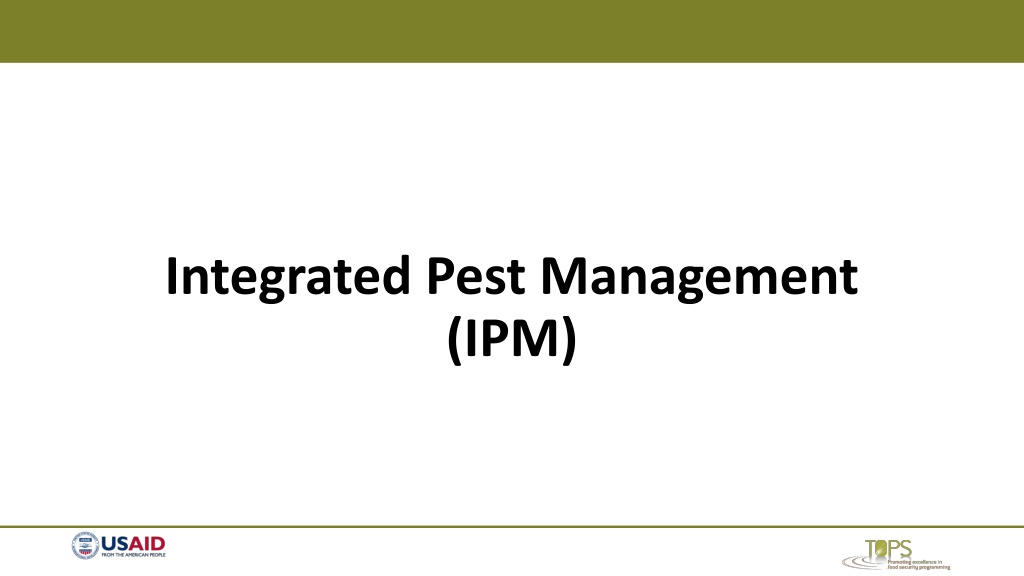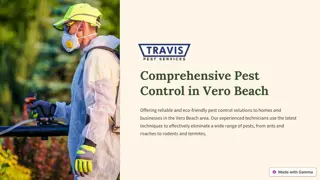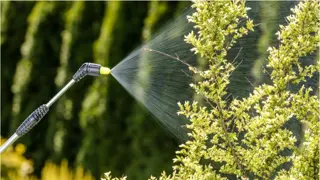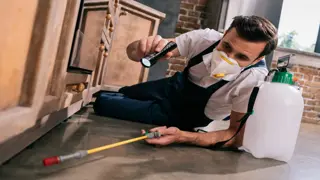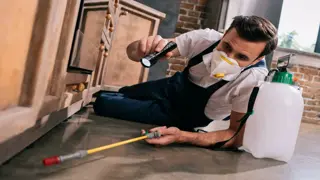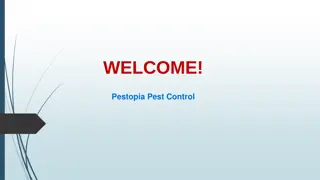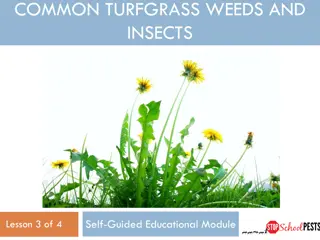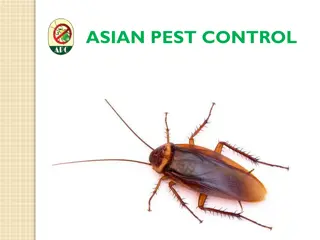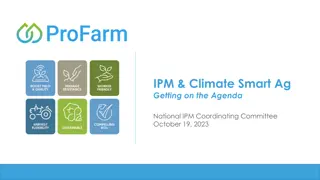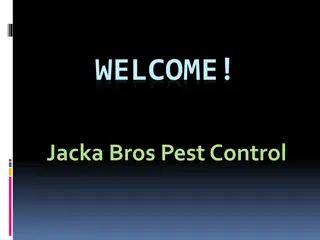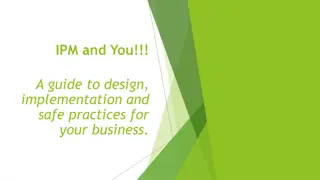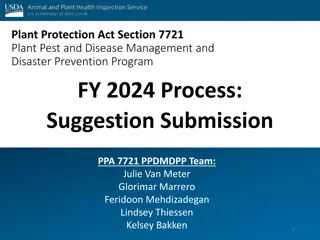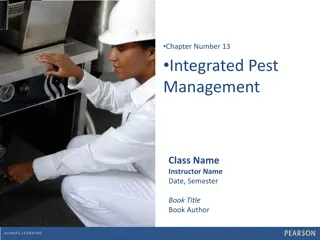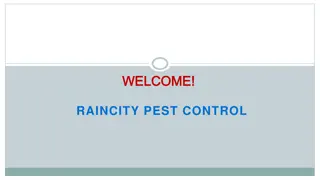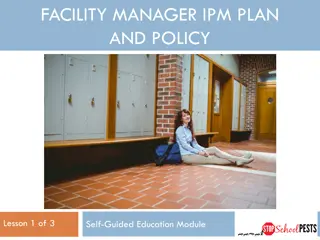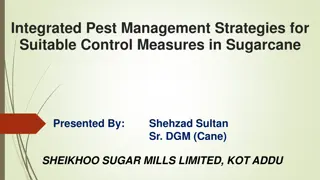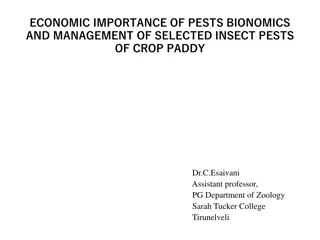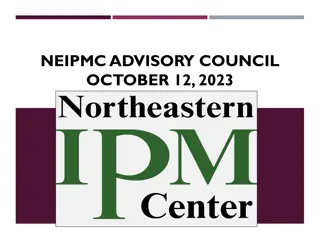Understanding Integrated Pest Management (IPM)
Integrated Pest Management (IPM) is a comprehensive approach that utilizes various methods to control pest populations effectively while minimizing harm to human health and the environment. IPM involves strategies such as monitoring, identification, trapping, inspection, sanitation, layout and design, physical control, and judicious use of pesticides. By implementing these practices, IPM aims to keep pest populations below economically damaging levels.
Download Presentation

Please find below an Image/Link to download the presentation.
The content on the website is provided AS IS for your information and personal use only. It may not be sold, licensed, or shared on other websites without obtaining consent from the author. Download presentation by click this link. If you encounter any issues during the download, it is possible that the publisher has removed the file from their server.
E N D
Presentation Transcript
IPM: Definition Use of all available knowledge (methods) to keep pest populations below economically damaging levels in a manner that causes no harm to human health and the environment.
IPM: Definition (methods) #8 #7 #6 #5 #4 #3 #2 #1
IPM: Definition (methods) Small Group Activity: Each group has 8 cards each card with a different IPM method / practice listed on it 1. Form 4 groups 2. Place cards in order from 1 to 8, as shown on pyramid #1 is the most basic, fundamental practice
IPM: Definition (methods) Pesticides Monitoring Identification Trapping Inspection Sanitation Layout & Design Physical Control
IPM: Definition (methods) Pesticides Monitoring Identification Trapping Inspection Sanitation Layout & Design Physical Control
IPM: Definition (methods) Pesticides Monitoring Identification Trapping Inspection Sanitation Layout & Design Physical Control
IPM: Definition (methods) Pesticides Monitoring Identification Trapping Inspection Sanitation Layout & Design Physical Control
IPM: Definition (methods) Pesticides Monitoring Identification Trapping Inspection Sanitation Layout & Design Physical Control
IPM: Definition (methods) Pesticides Monitoring Identification Trapping Inspection Sanitation Layout & Design Physical Control
IPM: Definition (methods) Pesticides Monitoring Identification Trapping Inspection Sanitation Layout & Design Physical Control
IPM: Definition (methods) Pesticides Monitoring 8 common methods to reduce loss due to pest infestation Each has advantages and limitations Identification Trapping Inspection Sanitation Layout & Design Physical Control
IPM: Physical Control Exclude what you can, especially rodents and birds
IPM: Physical Control Exclude what you can, especially rodents and birds Keep doors closed tight! Seal all gaps - from below ground to the rooftop Well-lighted interior warehouse spaces (discourage rodents) Screen vents and windows Exterior lights on ground shining up, not on or above doors; white lights away from buildings, high pressure sodium lights near buildings
IPM: Layout & Design To exclude insects, think up, down, and in-between
Invaders use natural openings to enter packages Photo courtesy: Dr. Mike Mullen
IPM: Layout & Design To control insects, think up, down, and in-between Good ventilation and air movement will promote a dry environment and discourage certain insects Strain on seams of bags at bottom of stacks creates holes big enough for insects to enter Rough floors collect dust, grain Pallets allow air circulation and cleaning underneath stacks Allow adequate space for alleys and between stacks.
IPM: Sanitation Sanitation is 90% of IPM
IPM: Sanitation Why is sanitation so important? Depriving pests of what they need (food, water, harborage and favorable environments) puts stress on them. Stressed insects are easier to kill with chemicals.
IPM: Sanitation Sanitation is 90% of IPM Deprive pests of what they need Clean outdoors & indoors Beware of importing infestations; segregate commodities as necessary First in / First out (get out in 6-8 months)
IPM: Inspection Look, Listen, Touch, Smell
What can you smell in the warehouse?
IPM: Inspection Small Group Activity: Part 1 1. Form 4 groups 2. Brainstorm items to be on an IPM inspection list Part 2 3. Compare your list to Annex T-6 Template 4. In plenary, describe any concerns with Annex T-6
IPM: Inspection Look, Listen, Touch, Smell Don t bring infestation in, inspect arriving commodities Identify conditions that can be corrected before problems develop Localized pest activity can be managed before spreading
IPM: Trapping Control technique Supplements monitoring
IPM: Trapping, Rodents Exterior 2 rows regularly spaced Focus on shadows, warm spots, corners, quiet places Interior Place, along travel paths After success, shift trap positions 0.5m
IPM: Trapping, Flying Insects Hanging Traps Traps insects in a sticky substance Good for moths and active beetles Hang or suspend traps at eye level Need insects to be mobile
IPM: Trapping, Crawling Insects Ground Traps Include harborage, sticky, and pitfall Corrugated cardboard, fill spaces with meal of flour Spiral of corrugated cardboard
IPM: Trapping Homemade traps????? Control technique Supplements monitoring Map trapping device locations (inside and outside)
